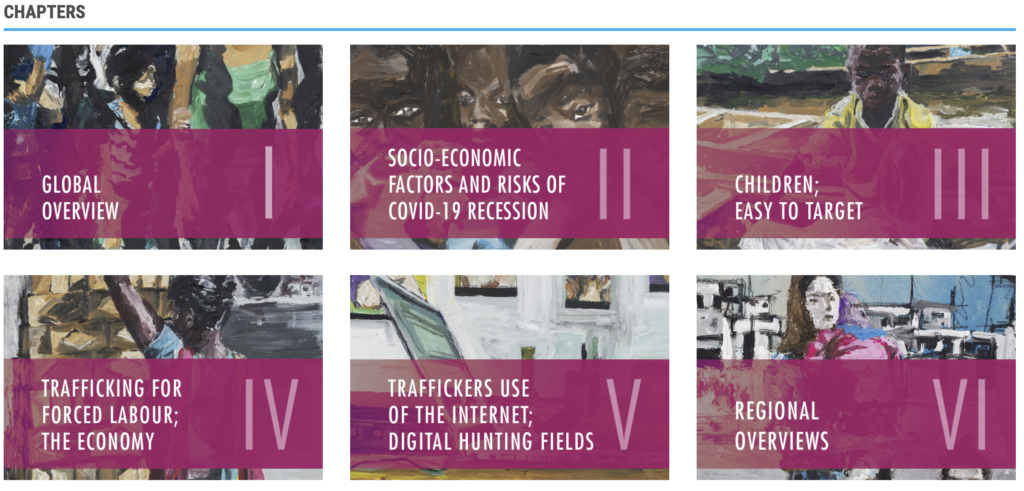Blog by Linda Witong, SI Advocacy Advisor.
According to the recently released Global Report on Trafficking in Persons, female victims continue to be particularly affected by trafficking in persons. In 2018 for every 10 victims detected globally, about five were adult women and two were girls. About one third of the overall detected victims were children, both girls and boys, while 20% were adult men. Overall, 50% of detected victims were trafficked for sexual exploitation, with 77% being women and 72% being girls. Other forms of trafficking continued to be forced labour, criminal activity, begging, forced marriages, organ removal, and other purposes.
The population at-risk of trafficking in low-income countries still mainly consisted of children living in extremely poor households. However other factors also contributed to the profile of victims of child trafficking including behavioural and developmental needs, lack of parental care and/or dysfunctional families even in high income countries.
Among children, girls aged between 14 and 17 years old appeared to be particularly targeted. This age pattern seemed to be part of broader patterns of sexual and gender-based violence that resulted in teenage girls also being particularly targeted as victims of other crimes, from bullying to sexual violence and murder. Girls’ risk of death as a result of violence increased from early to late adolescence and the first incident of sexual violence occurred most often between the ages of 15 and 19. Some studies in Central America, suggested that domestic violence and other forms of violence against women and children, as well as discrimination against ethnic minorities, potentially increased the risk of girls becoming victims of trafficking. Child trafficking for forced marriage was also found to be more common in periods of drought and economic hardship or in the case of natural disasters like floods e.g in South Asia.

The six chapters of the Global Report. Image from UNODC.
The Global Report also discussed how the general deterioration of economic conditions resulting from the COVID-19 pandemic had exposed more women and girls to the risk of trafficking. For example, the non-pharmaceutical interventions (NPI) and the patterns of behaviour prompted by the COVID-19 pandemic resulted in a global recession characterised by increasing levels of unemployment. Economic need was described as being the main cause of vulnerability in 52% of the cases reporting female trafficking and economic need was also a widespread condition characterising child trafficking worldwide. Furthermore, the pandemic had disproportionally affected population groups who were already affected by structural disadvantages – such as migrants, Hispanic and female workers– and could have a multiplier effect on the susceptibility of these groups to trafficking.
It was also observed that the general deterioration of economic conditions resulting from the COVID-19 pandemic would likely have a severe impact on the magnitude and composition of global cross-border trafficking flows in countries, such as Latin America, Sub-Saharan Africa and South Asia.
The Report also discussed the ways that traffickers were integrating technology into their business model at every stage of the process, from recruiting to exploiting victims. The internet even now allowed traffickers to live stream the exploitation of their victims, enabling the simultaneous abuse of one victim by many consumers around the globe.
To read Soroptimist International’s speech given at the United Nations Commission on Crime Prevention and Criminal Justice (UN CCPCJ) Special Event, click HERE.
To read the UNODC Global Report on Trafficking in Persons 2020, click HERE.

